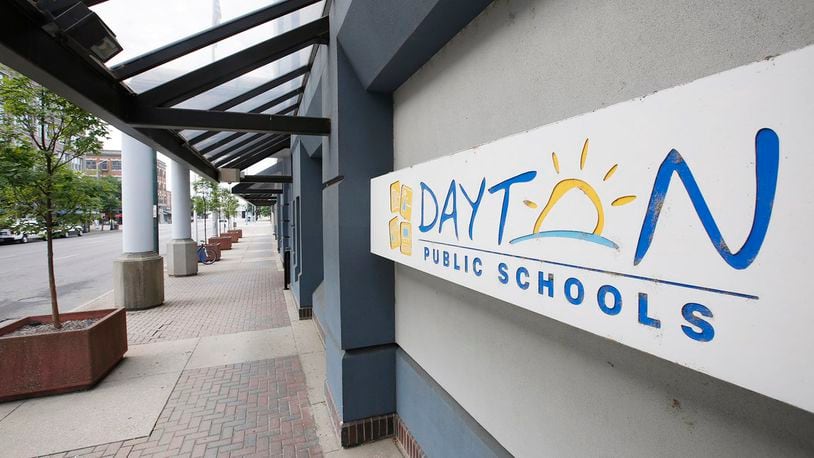» THE PATH FORWARD: DAYTON SCHOOLS: READ THE FULL STORY
Last year, nearly half of Dayton residents taking a community survey said the quality of Dayton Public Schools would make them less likely to raise a family in the city.
"I love this city with all my heart. As it stands now, I refuse to put a child through the current school system," said one of the respondents to the annual survey conducted by the city. Said another: "People I talk to move out because schools suck. No one stays to raise children here."
Here are five questions answered about the current state of the Dayton Public Schools and what’s next:
1. Why has the district ranked for years among the worst in the entire state in standardized testing?
Of 70 publicly funded school buildings in the city, only 27 are DPS schools. School choice has siphoned 40 percent of students from DPS into other districts or charter and private schools, some of which perform even worse. The district lacks a formal, up-to-date strategic plan with clear goals for improvement.
2. What students are going to Dayton Public Schools?
Median income for DPS families is 16th lowest in the state, lower than Columbus, Cincinnati or Cleveland. Many students deal with traumas and hardships from poverty that hurt classroom performance. The median pay for Dayton teachers is below the statewide average and far below what neighboring districts pay. Many experienced teachers leave.
3. How do DPS students perform academically?
One bright spot is that students at some DPS buildings perform much better than the district overall. The performance index for Stivers School for the Arts — which requires an audition for admission — is mid-range for Montgomery County. Horace Mann Pre-K-6 School, Ruskin Elementary and Charity Adams Earley Girls Academy are not far behind. Still, of the 10 lowest-performing buildings in the county, eight are Dayton Public schools.
Why such poor scores? Only one-third of Dayton Public School third-graders read proficiently at grade level, according to state tests, and only one-fifth of eighth-graders are proficient in math.
The district's four-year graduation rate of 73 percent is the region's lowest, according to Learn to Earn, a public-private partnership aiming to improve education outcomes across Montgomery County. Learn to Earn CEO Thomas Lasley said the district made a huge stride this summer by raising pay for teachers.
4. How do race and economic status impact Dayton Public Schools’ issues?
Poverty has been shown consistently across the country to hamper education. The Ohio Department of Education in a 2013 comparison put Dayton Public Schools’ student poverty rate as the second highest in the state behind East Cleveland. Dayton’s median household income is $23,669, according to the ODE — 16th lowest in the state. Dayton also faces the racial achievement gap: black students trail behind other groups in standardized tests.
RELATED: New team to investigate region’s biggest problems, search for solutions
This is a major issue for Learn to Earn, which released a report saying only 1 in 10 black males in Montgomery County starts kindergarten ready to learn and the black male graduation rate is only 65 percent — 25 percentage points lower than for white females.
Dayton Public Schools is 65 percent black, ranging from 95 percent of the students at Edison Pre-K-6 School to 17 percent at Eastmont Pre-K-6 School. People have raised concerns about a lack of equity among these schools, noting west-side, predominantly black schools have had fewer long-term teachers and more substitutes than those on the east side. Some complain there are more or better after-school programs at east-side schools.
“The unmistakable conclusion is that forces, practices and policies — in our cultures, neighborhoods, institutions, schools and homes — are keeping children of color from learning and succeeding at the highest levels,” the report says. “That’s a painful and uncomfortable truth to confront. But acknowledging explicit and implicit biases, subtle and unsubtle prejudices, is the only way to give all children the chance to excel.”
GET INVOLVED: How to volunteer with Dayton Public Schools
5. How can Dayton Public Schools move forward?
David Romick, president of the teachers union, the Dayton Education Association, said the district and public can work together to improve DPS’ image. “I think the biggest challenge facing DPS is probably the community’s perception of what DPS is,” he said. “I think unless you’re in the district seeing the great things going on in our schools, your perception of DPS is probably not great.
“They need to rebrand themselves,” said DPS parent Dion Sampson. He said this is part of making sure all the right people and plans are in place to move the district forward.
When asked if they are, he said hopefully: “I’m not sure. We’ll see, With the new changes, we’ll see.”
» THE PATH FORWARD: DAYTON SCHOOLS
- The region must rally to fix the Dayton Public Schools
- 5 kids who represent the best of Dayton Public Schools
- Plenty of parents love Dayton Public Schools; others plan to move
